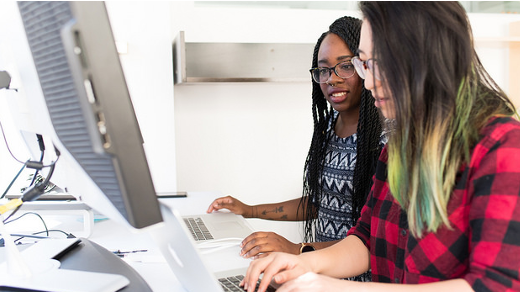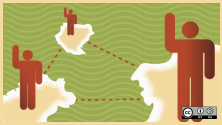This year we learned a lot about our community as we embraced our new work-from-home lives. We also met some amazing folks who are leveraging Linux and open source software in their organizations.
Open source community stories
Opensource.com community manager, Jen Wike Huger, posed some engaging questions to our writers' list throughout the year. The responses reflect the unique perspectives of each of our community members. Here are a few of my favorite stories that came from these async conversations.
Breakfast
What do open source technologists eat? Steve Morris wrote, "I'm an oatmeal guy for the most part. Walnuts, brown sugar, cinnamon, and flaxseeds for the win. Something I learned from being a runner is, if you fuel up, you can forget about food for a good long time." How are you starting your day? Here are 16 suggestions for ways to start your day from our contributors.
Work-from-home attire
How do stay at home nerds dress? The pandemic has invited us all to reconsider our norms. Do you work in your PJs? Correspondent Kevin Sonney wrote, "I learned long ago when I started full-time remote work, that I needed to do the whole "get up, get ready, get dressed like you were going into the office" thing, providing some structure to my day and to get my head in "the right place" for work." What's your favorite work from home wear?
Switching to Linux
It's been thirty years since Linus Torvalds created Linux. There are many reasons why folks switch to Linux. While attending college, Lisa Seelye couldn't afford a Windows license. She worked in a bookstore where she got a nice discount on Red Hat Linux 5.2. Twenty years later, she is working at Red Hat. The responses were varied. Here are 17 true stories from our community. What is your Linux story?
Programming origin stories
We learned the origin stories of twenty-four open source technologists by asking them what their first programming language was. The answers were as varied as you would expect. They ranged from BASIC, Fortran, Python, Scratch, Logo, and many more. Greg Pittman said, "After switching to Linux, my next language was Perl, which oddly enough seemed like a fairly easy transition from BASIC. After Perl, came Python, a language less stiff with syntax."
Interviews with open source technologists
FreeDos founder
Our most popular interview was with Jim Hall, the founder of FreeDOS. Jim created FreeDOS in response to Microsoft ending support for MS-DOS in 1994. Jim said, "I heard that Microsoft planned to "do away" with MS-DOS. The next version of Windows would eliminate DOS. I didn't like that, and I still wanted to run DOS. I decided that if folks could come together over the Internet to write something like Linux, surely, we could do the same with DOS. After all, DOS was fairly simple compared to Linux." Joshua Allen Holm and I collaborated on this interview that celebrated how Jim founded a free and open source operating system as a college student.
Open source CEO
Clayton Dewey interviewed Pablo Ruiz-Múzquiz, the CEO and co-founder of Kaleidos and Taiga shares about that experience. You will enjoy reading about the development of Penpot and the strength of open source development. Pablo Ruiz-Muzquiz says that, "When you narrow that gap between design and code, magic happens. You have more functional conversations—being open source gives you the innovation that comes from the community. Open source gives you a global reach."
Open source educator
Twenty years ago, when Robert Maynord started teaching at a small private school in Monona, Wisconsin, with only eight Windows 95 computers, his expertise and enthusiasm transformed that school. In the process, it was pandemic-ready using Linux open source tools. The pandemic required the school to go virtual with online video interaction. Robert set up a BigBlueButton server that integrated well with Moodle. Robert states that "Far and away, the most important benefit of using open source software is that both teachers and students are learning technological skills in a broad framework, rather than narrowly based on brand names and marketing strategies."
Linux librarian
The Crawford County Federated Library System near Erie, PA, has been using Linux and open source software since 1999. Shortly after being hired by the library system in 1998, Cindy Murdock Ames was introduced to Linux and saw its potential for innovation and cost savings. Cindy stated, "One of the major strengths from our use of open source is versatility. Once you start using free and open source software (FOSS) for one project, you find you can apply it to many others—from desktops, library circulation systems, patron login management systems."
Open source global communicator
Communication is key, and the world of professional communication is nuanced. Rachel Naegele is a graduate student at the University of Minnesota enrolled in their scientific and professional communications program. She recently interviewed Jim Hall to learn more about professional communications in the multinational FreeDOS project. In a day and time when communication has become more fractured, Jim recommends, "always assume positive intent. If someone reached out to you in an email, read past any preconceptions about how that person communicated and find the message they wanted to convey."







Comments are closed.